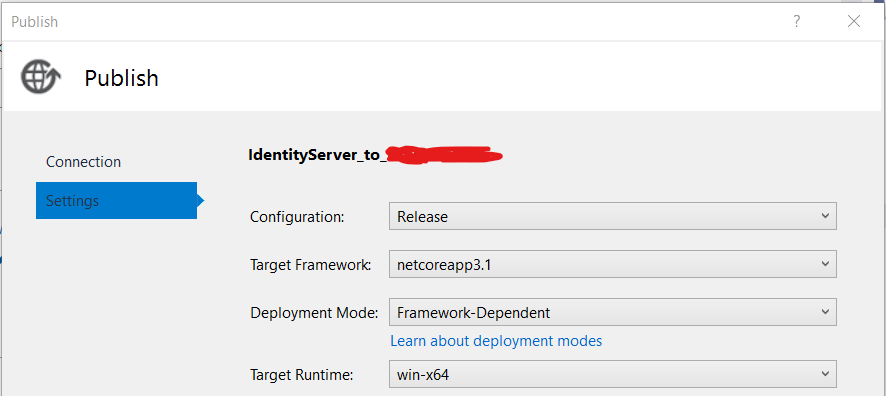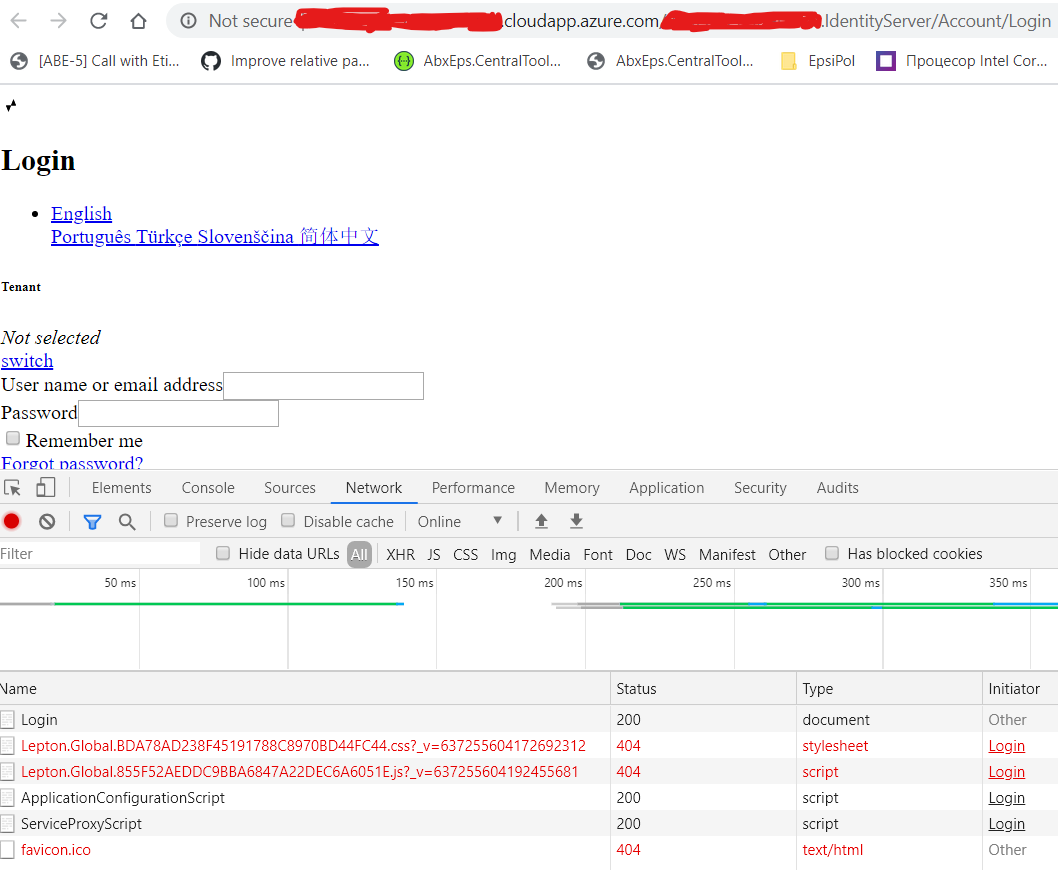Activities of "alexander.nikonov"
I wonder why UpdateAsync returns INPUT data, even if the input data has been changed? For instance, I have the space truncating rule for my entity:
b.Property(x => x.Domain)
.HasConversion(new ValueConverter<string, string>(v => v.Trim(), v => v.Trim()))
.HasColumnName("C_DOMAIN").HasMaxLength(DbConsts.DomainMaxLength);
Despite this fact, the method returns INPUT data which does not have truncation:
public async Task<ModuleDto> UpdateAsync(ModuleKeyDto id, UpdateModuleDto input)
{
var module = await _moduleRepository.GetAsync(m => m.ApplicationId == id.ApplicationId && m.ModuleId == id.ModuleId);
if (module == null)
{
throw new UserFriendlyException("Module not found", ErrorCodes.NotFound);
}
ObjectMapper.Map(input, module);
var updatedModule = await _moduleRepository.UpdateAsync(module); // updatedModule container non-truncated value that was present in module!!!
await CurrentUnitOfWork.SaveChangesAsync();
return ObjectMapper.Map<Module, ModuleDto>(updatedModule);
}
Looks like a bug? I can re-read the entity and it then will look allright, but don't want to make an extra trip to DB.
I see now... But is dotnet-ef tool the same thing as Microsoft.EntityFrameworkCore.Tools package? So basically I can use PM commands add-migration / script-migration -from 0 and so on instead? I just need to leave only ABP-related tables inside CentralToolsMigrationsDbContext.OnModelCreating method.
I've tried that (I used EntityFrameworkCore project as a base and added the Microsoft.EntityFrameworkCore.Design reference as asked by the tool). After running migration tool, I'm getting
Unable to create an object of type 'XXXXDbContext' //this is the class inherited from AbpDbContext<XXXXDbContext>
Hi,
we are not planning to use DB migration for our project tables - we have predefined DB tables structure, which will be changed by applying SQL scripts and the code just must be in-sync with it. At the same time, we understand DB migration mechanism is used in ABP Framework solution to create default tables (ABP[XXX], IDENTITYSERVER[XXX]) - so when ABP Framework gets updated, these tables might be updated accordingly.
Could you please suggest the best approach to use in the solution? Is it possible to go without DbMigration-related projects at all? Or it needs to be some selective migration? How to set it up?
I hope it will be easy... :)
Step 1) Create a boilerplate project, as described in the abp doc;
Step 2) Create the folder on a remote machine for publishing IdentityServer project, set it up as an IIS application under Default Web Site and assign a separate app pool to it:
 Step 3) Publish IdentityServer project to that remote machine using the publish profile as below (please replace XXX / YYY / ZZZ and some other dummy values with relevant values):
Step 3) Publish IdentityServer project to that remote machine using the publish profile as below (please replace XXX / YYY / ZZZ and some other dummy values with relevant values):
IdentityServer_to_RemoteMachine.pubxml
<?xml version="1.0" encoding="utf-8"?>
<!--
This file is used by the publish/package process of your Web project. You can customize the behavior of this process
by editing this MSBuild file. In order to learn more about this please visit https://go.microsoft.com/fwlink/?LinkID=208121.
-->
<Project ToolsVersion="4.0" xmlns="http://schemas.microsoft.com/developer/msbuild/2003">
<PropertyGroup>
<WebPublishMethod>MSDeploy</WebPublishMethod>
<PublishProvider>AzureVirtualMachine</PublishProvider>
<LastUsedBuildConfiguration>Debug</LastUsedBuildConfiguration>
<LastUsedPlatform>Any CPU</LastUsedPlatform>
<SiteUrlToLaunchAfterPublish>http://XXX.cloudapp.azure.com/YYY.IdentityServer</SiteUrlToLaunchAfterPublish>
<LaunchSiteAfterPublish>True</LaunchSiteAfterPublish>
<ExcludeApp_Data>False</ExcludeApp_Data>
<ProjectGuid>073c361e-b8f4-49f5-93cc-72a3ff49c026</ProjectGuid>
<MSDeployServiceURL>XXX.cloudapp.azure.com:8172</MSDeployServiceURL>
<DeployIisAppPath>Default Web Site\YYY.IdentityServer</DeployIisAppPath>
<RemoteSitePhysicalPath />
<SkipExtraFilesOnServer>False</SkipExtraFilesOnServer>
<MSDeployPublishMethod>WMSVC</MSDeployPublishMethod>
<EnableMSDeployBackup>True</EnableMSDeployBackup>
<UserName>YOUR_USERNAME</UserName>
<_SavePWD>True</_SavePWD>
<TargetFramework>netcoreapp3.1</TargetFramework>
<RuntimeIdentifier>win-x64</RuntimeIdentifier>
<SelfContained>false</SelfContained>
</PropertyGroup>
</Project>
IdentityServer_to_RemoteMachine.pubxml.user
<?xml version="1.0" encoding="utf-8"?>
<!--
This file is used by the publish/package process of your Web project. You can customize the behavior of this process
by editing this MSBuild file. In order to learn more about this please visit https://go.microsoft.com/fwlink/?LinkID=208121.
-->
<Project ToolsVersion="4.0" xmlns="http://schemas.microsoft.com/developer/msbuild/2003">
<PropertyGroup>
<TimeStampOfAssociatedLegacyPublishXmlFile />
<EncryptedPassword>YOUR_ENCRYPTEDPASSWORD</EncryptedPassword>
</PropertyGroup>
<ItemGroup>
<DestinationConnectionStrings Include="Default">
<Value>YOUR_CONNECTIONSTRING</Value>
</DestinationConnectionStrings>
</ItemGroup>
</Project>
Step 3) When the published IdentityServer website is being run, you (hopefully) will see the same broken UI as reported by me earlier;
I have not tried to deploy to local IIS server yet - in fact, it's even not set up, because we supposed to use remote DEV machine for running our backend. BTW, when I run this app via IIS Express - I can't see the 'Lepton.Global' bundle loading at all. I've tried to figure out what this bundle was about, playing around AbpBundlingOptions in my IdentityServerModule and hoping to override LeptonThemeBundles.Scripts.Global / LeptonThemeBundles.Styles.Global bundles - but seems like those are not bundle names...
Hi,
I've deployed boilerplate projects (HttpApi.Host and IdentityServer) to Azure VM.

Both are placed under "Default Web Site" as applications. While I was able to resolve a path issues for HttpApi.Host application and it is displayed properly in browser, I still get a broken markup for IdentityServer application (as shown in the screenshot below): probably, it has to do with incorrect application paths for bundle creation - they are considered for web root folder, not for application folder. Could you please help me to fix this? Are there other places in the solution I might need to check and make the changes for setting correct root folder (i.e. application folder is a root folder, not a web site root folder).

